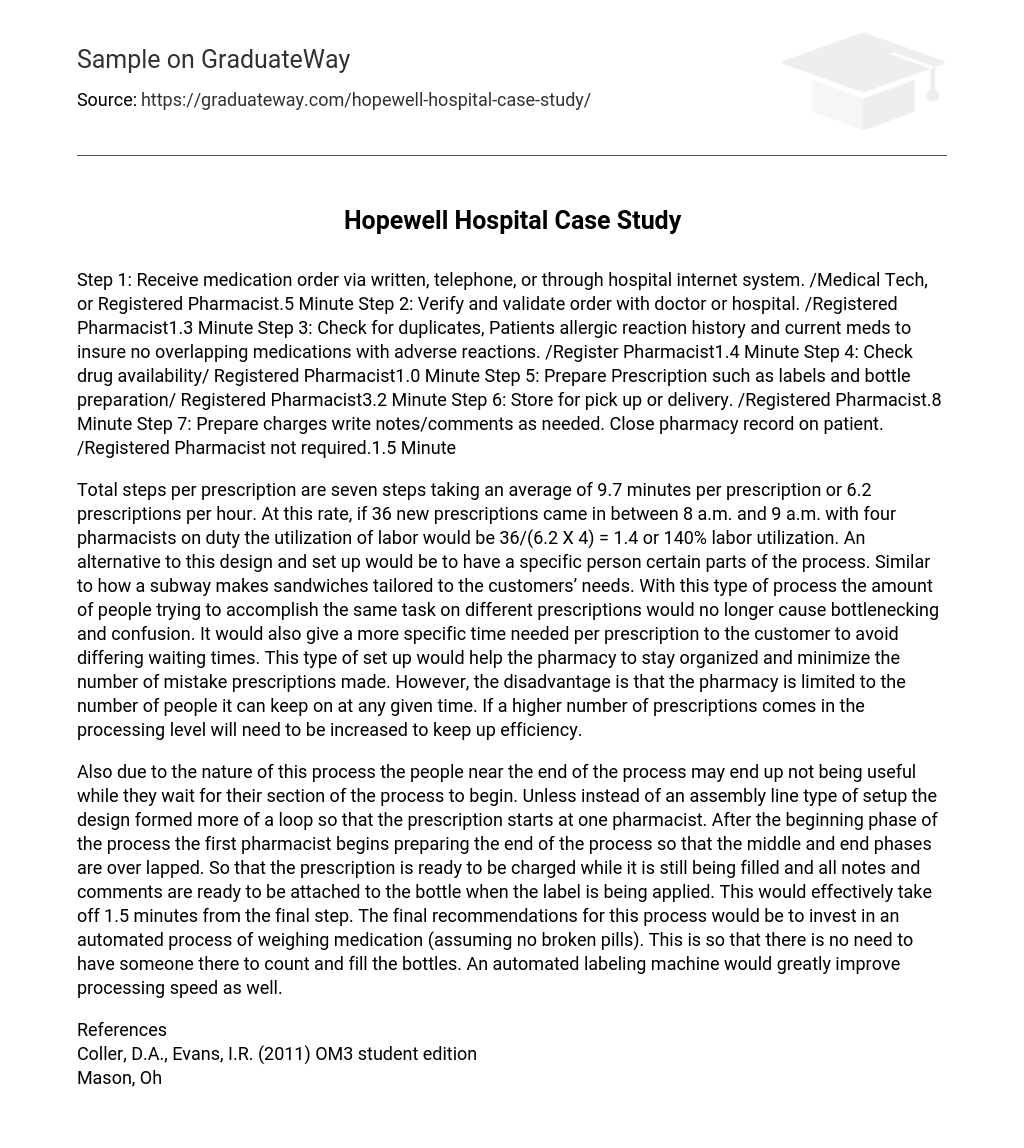Step 1: Receive medication order via written, telephone, or through hospital internet system. /Medical Tech, or Registered Pharmacist.5 Minute Step 2: Verify and validate order with doctor or hospital. /Registered Pharmacist1.3 Minute Step 3: Check for duplicates, Patients allergic reaction history and current meds to insure no overlapping medications with adverse reactions. /Register Pharmacist1.4 Minute Step 4: Check drug availability/ Registered Pharmacist1.0 Minute Step 5: Prepare Prescription such as labels and bottle preparation/ Registered Pharmacist3.2 Minute Step 6: Store for pick up or delivery. /Registered Pharmacist.8 Minute Step 7: Prepare charges write notes/comments as needed. Close pharmacy record on patient. /Registered Pharmacist not required.1.5 Minute
Total steps per prescription are seven steps taking an average of 9.7 minutes per prescription or 6.2 prescriptions per hour. At this rate, if 36 new prescriptions came in between 8 a.m. and 9 a.m. with four pharmacists on duty the utilization of labor would be 36/(6.2 X 4) = 1.4 or 140% labor utilization. An alternative to this design and set up would be to have a specific person certain parts of the process. Similar to how a subway makes sandwiches tailored to the customers’ needs. With this type of process the amount of people trying to accomplish the same task on different prescriptions would no longer cause bottlenecking and confusion. It would also give a more specific time needed per prescription to the customer to avoid differing waiting times. This type of set up would help the pharmacy to stay organized and minimize the number of mistake prescriptions made. However, the disadvantage is that the pharmacy is limited to the number of people it can keep on at any given time. If a higher number of prescriptions comes in the processing level will need to be increased to keep up efficiency.
Also due to the nature of this process the people near the end of the process may end up not being useful while they wait for their section of the process to begin. Unless instead of an assembly line type of setup the design formed more of a loop so that the prescription starts at one pharmacist. After the beginning phase of the process the first pharmacist begins preparing the end of the process so that the middle and end phases are over lapped. So that the prescription is ready to be charged while it is still being filled and all notes and comments are ready to be attached to the bottle when the label is being applied. This would effectively take off 1.5 minutes from the final step. The final recommendations for this process would be to invest in an automated process of weighing medication (assuming no broken pills). This is so that there is no need to have someone there to count and fill the bottles. An automated labeling machine would greatly improve processing speed as well.
References
Coller, D.A., Evans, I.R. (2011) OM3 student edition
Mason, Ohio. Joe Sabatino





